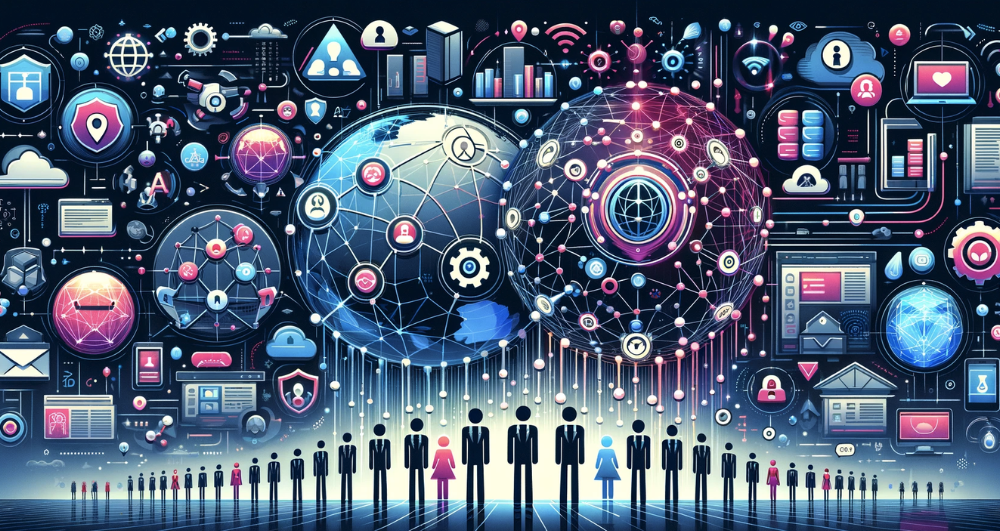The technological landscape is undergoing a remarkable transformation with the advent of multi-agent based systems. These systems, powered by an array of actors leveraging Large Language Models (LLMs) and backed by sophisticated knowledge repositories like vector stores, are setting a new standard in computational efficiency and capability. As the costs of GPUs and inferencing continue to decrease, the adoption of multi-agent systems is expected to become even more widespread.
When we talk about an agent in the context of multi-agent frameworks, we’re referring to a unit of software with the capability to independently execute tasks or make decisions informed by its surroundings. It’s important to note, however, that this initial description only scratches the surface of the intricate and varied world of agents. These entities can vary widely in complexity, from basic, rule-following bots that perform predefined actions, to advanced artificial intelligence systems endowed with the ability to learn from and adapt to their environments in sophisticated ways. Understanding this spectrum of capabilities is key to appreciating the full scope and potential of agents within multi-agent systems, however for this article we won’t dive into all the capabilities.
At the heart of this transformation are going to be frameworks such as AutoGen, AutoGPT, MetaGPT, and ChatDev, to name a few, which will lay the groundwork for the development of multi-agent systems where agents can work together to accomplish a task or goal.
Central to the evolution of multi-agent systems (MAS) are various groundwork conceptual and operational frameworks, examples of which include AutoGen, AutoGPT, MetaGPT, and ChatDev. These frameworks are pivotal to establishing the foundations necessary for the creation and efficient operation of MAS, wherein agents collaborate to achieve shared objectives and tasks.
Multi-agent frameworks will enable the creation and specialization of a constellation of agents, each utilizing different LLMs and specialized knowledge bases, and leveraging various approaches to retrieval-augmented generation, thereby collaborating to accomplish complex tasks.
However, as these systems begin to permeate various sectors, including U.S. government agencies, they prompt a reevaluation of conventional security and auditing frameworks.
In the evolving landscape of system architectures, where traditional setups featuring web applications, REST or GraphQL APIs, gateways, and data meshes starkly contrast with the decentralized, message-driven communication models of multi-agent systems (MAS), a vital challenge emerges: ensuring robust security within these decentralized networks. This challenge necessitates security measures that not only integrate smoothly with existing security frameworks but also adapt to the unique dynamics of MAS.
Addressing the security conundrum in MAS, especially as they begin to play a significant role in the infrastructure of the US government, demands innovative solutions. Our research and development initiatives are deeply engaged in tackling this and other related challenges, aiming for a seamless adoption of MAS.
A promising direction in this quest is the deployment of specialized agents within the MAS architecture, tasked with the critical role of safeguarding data integrity and access. Imagine an agent with the specific duty of identifying the sources of data, including comprehensive data lineage considerations, and leveraging existing API endpoints, LDAP queries, and various established methods to verify whether a user requesting data is authorized to access it.
This ensures that responses generated or data used in Retrieval-Augmented Generation (RAG) processes are securely managed and accessed and all access control policies are followed at all times.
Such specialized agents epitomize the adaptation of traditional security measures to fit the decentralized, message-driven nature of MAS, ensuring that security does not become an afterthought but a seamlessly integrated component of the system’s architecture.
This specialized security agent example exemplifies the potential of multi-agent systems to not only mimic but also enhance the capabilities of human counterparts in critical areas such as cybersecurity.
By maintaining a focus on continuous learning and adaptation (similar to the professional development of human employees), such agents can offer invaluable assistance in generating secure code and configurations.
As we continue to explore the frontiers of multi-agent systems, our subsequent posts will delve into the core foundational agents necessary for their deployment within U.S. government frameworks. The journey towards integrating multi-agent systems into our technological infrastructure is both challenging and exhilarating. It promises to redefine our approach to security, efficiency, and collaboration in an increasingly complex digital world.
About the Authors
John Mark Suhy and Philippa (Pippa) Scroggins bring a wealth of experience and insight into the evolving landscape of multi-agent systems and cybersecurity.
John, with a deep background in advanced software architecture and system design, has spearheaded numerous projects aimed at enhancing digital infrastructures.
Pippa, focused on artificial intelligence and data science, complements this with her understanding of the latest trends in algorithmic innovation and strategic implementation.

Comments are closed.